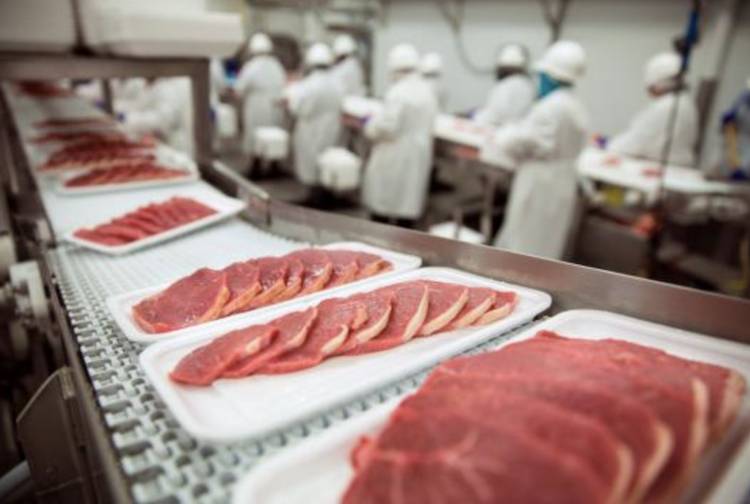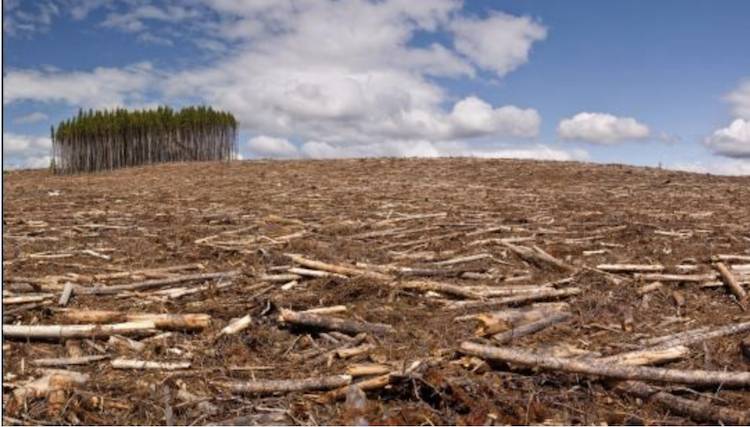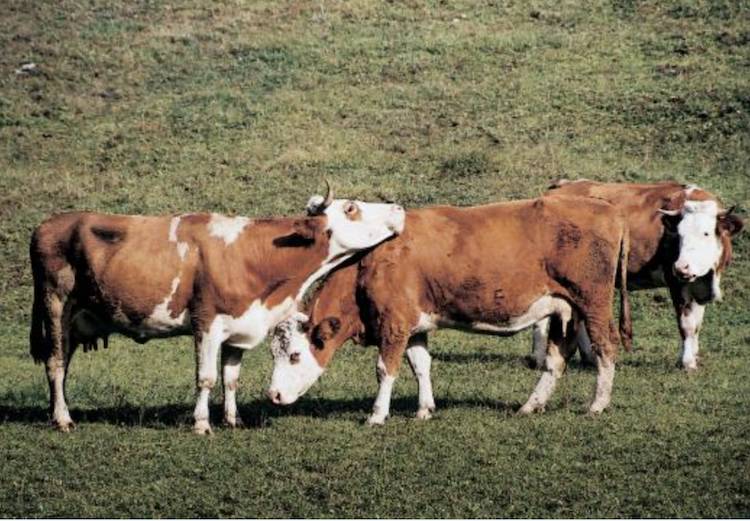
Environmental impact of meat consumption
An Environmental Article from All-Creatures.org
From
FourPaws
October 2016
Compared to the production of fruits and vegetables, much more energy is needed for the production of meat, milk, cheese and butter, which causes more C02 emissions. The increased production of nitrous oxide and carbon dioxide is mainly caused by the fertilisation of agricultural land or the production of mineral fertilisers and pesticides.

© elnariz - Fotolia
A glass of milk for breakfast, spaghetti Bolognese for lunch, a boiled
egg and a slice of salami for dinner-for many people this is a typical
example of a standard diet, but it is also one that raises the global meat
consumption steadily. The consumption of meat and other animal related
products is growing at a rapid rate, especially in developing countries.
According to recent studies, the demand for meat will double by 2050.
As well as the fact that many animals are subjected to huge suffering as a
result of this industry, the ever increasing demand for meat and dairy
products, is also having a detrimental effect on the environment and
climate, a fact which many people are particularly not aware of.
Animal Products are climate killers
There are various signs of ongoing climate change including the melting
of glaciers, frequent extreme weather conditions and global warming. This is
due to the increased human-induced quantities of greenhouse gases such as
carbon dioxide (CO2), methane (CH4) and nitrous oxide (N20), which enhance
the natural greenhouse effect. These greenhouse gases are caused not only by
the burning of fossil fuels (for example; coal, natural gas, oil) but also
by global transportation (automobiles, ships, and airplanes).
The livestock and production of animal products has serious implications.
World-wide, 14.5% of total man-made greenhouse gas emissions are from animal
production, of which the beef and dairy industries play a big part, due to
the high demand for animal feed as well as the releases of methane, which
are the biggest polluters in the sector.
Compared to the production of fruits and vegetables, much more energy is
needed for the production of meat, milk, cheese and butter, which causes
more C02 emissions. The increased production of nitrous oxide and carbon
dioxide is mainly caused by the fertilisation of agricultural land or the
production of mineral fertilisers and pesticides.

© eppicphotography
Other Effects
- Deforestation: For recovering pastures or for growing animal feed (such as soy)
- Water Shortages and water pollution: much more water is needed during the production stages of meat and other animal products (For example: I kg of beef uses 15,000 liters of water.
- Eutrophication of the agricultural land, use of pesticides and chemicals which lead to water pollution
- Biodiversity loss: Due to deforestation of tropical forests and changes in grassland areas for the creation of agricultural land.
Sources:
- Animal Production and Health
- Tackling Climate Change Through Livestock: A Global Assessment of Emissions and Mitigation Opportunities (PDF)

© FOUR PAWS
Return to Environmental Articles
Read more at The Meat and Dairy Industries







